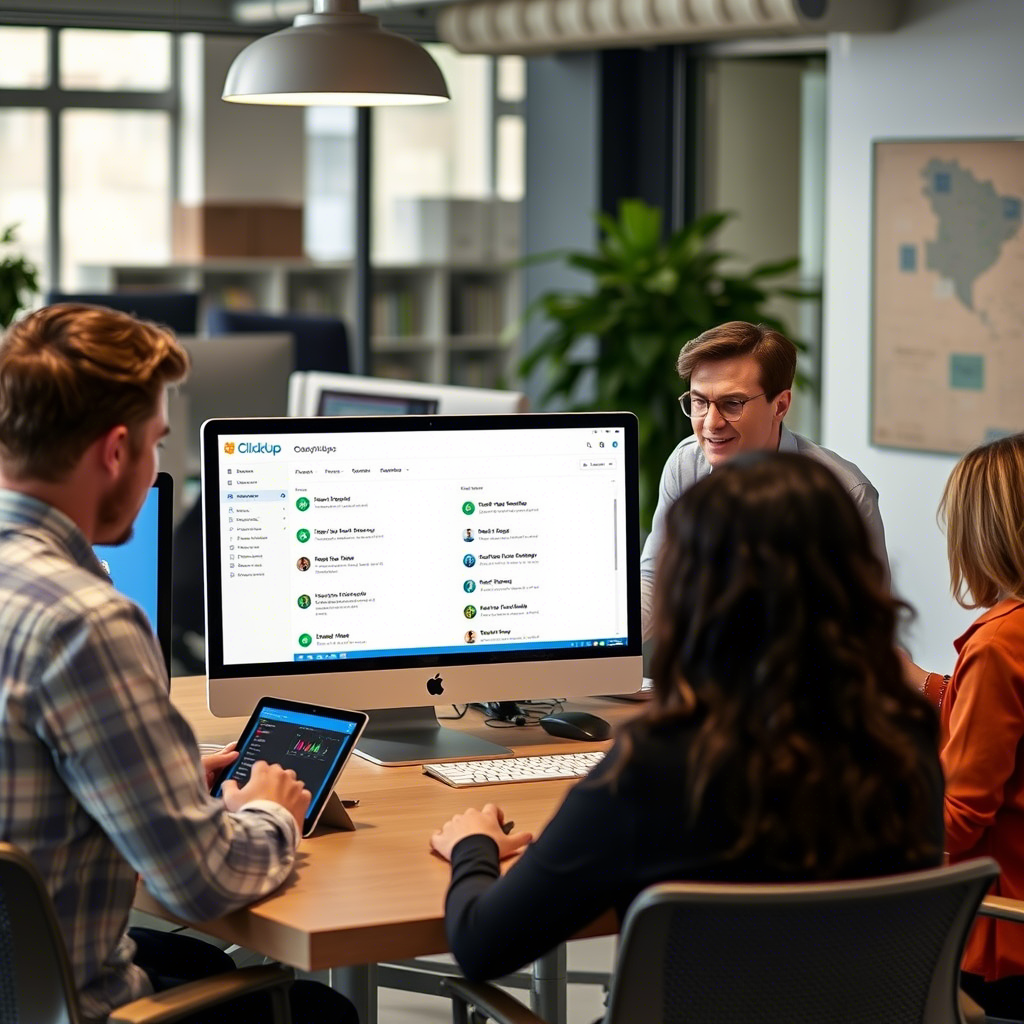Managing clients efficiently is essential for any business. Whether you run a marketing agency, a freelance business, or a service-based company, keeping track of client communication, project deadlines, and feedback can be overwhelming.
ClickUp is a powerful project management tool that helps businesses stay organized and improve communication with clients. It offers a centralized platform where you can manage tasks, track progress, and collaborate seamlessly.
In this guide, we’ll explore how ClickUp can streamline client management, enhance communication, and help businesses deliver better results.
1. Why Use ClickUp for Client Management?
ClickUp is more than just a task management tool—it’s a complete client relationship management (CRM) solution that helps businesses stay connected with their clients. Here’s why ClickUp is an excellent choice for client management:
All-in-One Platform
ClickUp brings all client-related tasks, documents, and communication into one place. Instead of switching between multiple tools, you can handle everything in a single workspace.
Custom Workflows
Every business has unique client management needs. ClickUp allows you to create custom workflows tailored to your specific projects and processes.
Automated Client Updates
You can automate task reminders, status updates, and notifications, ensuring clients always stay informed without manually sending emails.
Easy Collaboration
ClickUp makes it easy for teams and clients to collaborate in real-time through comments, shared documents, and integrated messaging tools.2. Setting Up ClickUp for Client Communication
To effectively manage clients with ClickUp, you need to set up your workspace in an organized way. Here’s how:
A. Structuring Your Workspace
- Create a Workspace for your business.
- Use Folders to organize different clients or projects.
- Within each folder, create Lists for tasks, deliverables, or milestones.
For example, if you’re a marketing agency, you can create:
Client Name Folder → Social Media Management List → Tasks for Content Creation
B. Customizing Client Dashboards
Dashboards in ClickUp provide a real-time view of client projects. You can add:
- Task lists
- Project progress
- Timelines and deadlines
- Client-specific notes and updates
Clients can be given limited access to view project updates without seeing sensitive internal discussions.
C. Automating Workflows for Client Interactions
Automation in ClickUp saves time and ensures smooth client communication. You can set up:
- Automatic email updates when a project reaches a new phase.
- Task assignments based on project progress.
- Follow-up reminders for pending client approvals.
This ensures clients stay updated without the need for back-and-forth emails.
3. Enhancing Client Communication with ClickUp
A. Using ClickUp Chat and Comments
Instead of sending long email threads, use ClickUp’s built-in chat feature for quick discussions. You can:
Tag clients and team members in task comments.
Keep all communication linked to relevant tasks.
Reduce the chances of miscommunication.
B. ClickUp Docs for Client Briefs and Proposals
ClickUp Docs allows you to create and share:
Project proposals
Client agreements
Reports and updates
These documents can be stored directly within client projects, making it easy to access and update them as needed.
C. Managing Client Feedback with Forms and Approvals
- Use ClickUp Forms to collect client feedback or requests.
- Set up an Approval Process where clients can review and approve work before finalizing.
This makes it easy to track feedback and ensure everything is documented properly.
4. Tracking Client Projects and Deliverables
A. Task & Subtask Management
Break projects into smaller, manageable tasks with due dates and priorities. This keeps projects on track and ensures all deliverables are completed on time.
B. Best ClickUp Views for Client Management
ClickUp offers multiple views to track client projects efficiently:
List View – Displays all tasks in a structured format.
Board View – Helps visualize progress using Kanban boards.
Calendar View – Keeps track of deadlines and meetings.
Timeline & Gantt Chart – Provides a complete project timeline.
Clients can access specific views to check progress without overwhelming them with unnecessary details.
C. Reporting and Performance Tracking
ClickUp’s reporting features help businesses monitor:
Task completion rates
Project timelines
Deadlines met vs. missed
Regular reports can be shared with clients, keeping them updated on progress and performance.
5. ClickUp Integrations to Improve Client Management
ClickUp integrates with various tools to enhance client communication and streamline workflows.
Email Integration
You can send and receive emails directly within ClickUp to manage client communication without switching apps.
CRM Tools
ClickUp connects with Salesforce, HubSpot, and other CRMs to keep track of client interactions and sales pipelines.
Invoicing & Payments
Easily integrate QuickBooks, PayPal, or Stripe to manage client billing and payments.
Time Tracking & Billing
Use ClickUp’s built-in time tracking or integrate with Toggl and Harvest to log billable hours for clients.
For expert guidance on setting up ClickUp integrations, businesses can explore ClickUp consulting services to get professional support and maximize efficiency.
6. Best Practices for Using ClickUp with Clients
- Keep It Simple – Avoid overcomplicating workflows; clients should find ClickUp easy to use.
- Set Communication Guidelines – Establish when and how clients should interact within ClickUp.
- Provide Training – Offer a short tutorial or guide for clients unfamiliar with ClickUp.
- Use Templates – Save time by using pre-built ClickUp templates for client onboarding, reporting, and project tracking.
- Review & Improve – Regularly update and refine your ClickUp setup to improve efficiency.
Conclusion
ClickUp is a powerful tool for client management that helps businesses streamline communication, organize tasks, and improve collaboration. By setting up custom workflows, automating updates, and integrating with other tools, businesses can save time, enhance efficiency, and provide better service to their clients.

